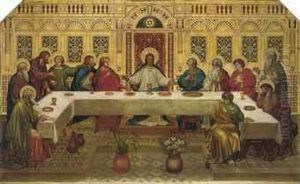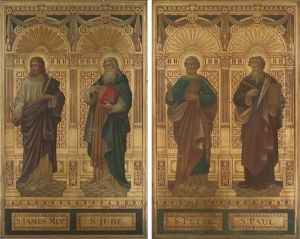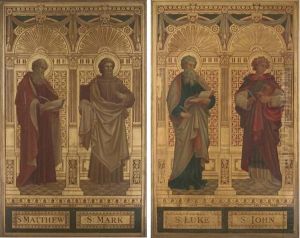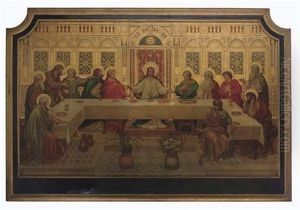Alfred Bell Paintings
Alfred Bell, born in 1832, was a British artist and craftsman, particularly recognized for his contributions to the field of stained glass design during the Victorian era. His work is often associated with the broader Gothic Revival movement, which sought to revive medieval art and architecture styles amidst the industrialization of the 19th century. Bell's artistic endeavors were closely tied to the ecclesiastical and decorative arts, reflecting the period's interest in integrating art into public and sacred spaces.
Bell's career was largely associated with the firm he founded, Clayton and Bell, in partnership with John Richard Clayton in 1855. This firm quickly became one of the most prolific and respected stained glass producers of the Victorian period, known for its high quality and artistically innovative designs. They were responsible for creating windows for many of the UK's most notable buildings and churches, contributing significantly to the visual landscape of Victorian spirituality and aesthetics.
Throughout his career, Bell and his firm embraced both traditional and innovative techniques, often incorporating vibrant colors and intricate patterns that became synonymous with Victorian stained glass art. Their work was characterized by a deep understanding of medieval craftsmanship while also engaging with the technological advancements of the era. This blend of the old and the new allowed Clayton and Bell to produce works that were both nostalgic and forward-looking, earning them commissions across the British Isles and the British Empire.
Alfred Bell's contributions to the arts were not limited to stained glass; he was also involved in other decorative projects, including mosaic and fresco work. However, it is his legacy in stained glass that has endured, with many of his creations still admired and preserved within architectural landmarks. Bell's work reflects the Victorian era's complex relationship with religion, industry, and art, showcasing a balance between reverence for the past and excitement for the future.
Bell passed away in 1895, but his influence persisted through the continued operation of Clayton and Bell, which remained active well into the 20th century. Today, Alfred Bell is remembered as a key figure in the Gothic Revival movement and a master of stained glass art, whose works continue to illuminate the interiors of countless buildings with their timeless beauty and craftsmanship.



